A uniform rod of mass M has an impulse applied at right angles to one end. If the other end begins to move with speed V, the magnitude of the impulse is
MV
MV2
2MV
2MV3
The correct Answer is:B
Step by step video, text & image solution for A uniform rod of mass M has an impulse applied at right angles to one end. If the other end begins to move with speed V, the magnitude of the impulse is by Physics experts to help you in doubts & scoring excellent marks in Class 12 exams.
Updated on:21/07/2023Topper's Solved these Questions
- 10 ROTATIONALBook:MOTIONChapter:10 ROTATIONALExercise:Exercise - 2 (Level -I)
Explore 51 Videos
- 10 ROTATIONALBook:MOTIONChapter:10 ROTATIONALExercise:Exercise - 2 (Level - II)
Explore 25 Videos
- 10 ROTATIONALBook:MOTIONChapter:10 ROTATIONALExercise:Example 31
Explore 1 Video
- ALTERNATING CURRENTBook:MOTIONChapter:ALTERNATING CURRENTExercise:EXERCISE - 4 (LEVEL - II)
Explore 14 Videos
Similar Questions
A uniform rod of mass M and length L lies on a frictionless horizontal plane. A particle of same mass M moving with speed v0 perpendicular to the length of the rod strikes the end of the rod and sticks to it. Find the velocity of the center of mass and the angular velocity about the center of mass of (rod + particle) system.
View SolutionA uniform rod of mass m=2kg and length l is kept on a smooth horizontal plane. If the ends A and B of the rod move with speeds v and 2v respectively perpendicular to the rod, find the:
a. angular velocity of CM of the rod.
b. Kinetic energy of the rod (in Joule).
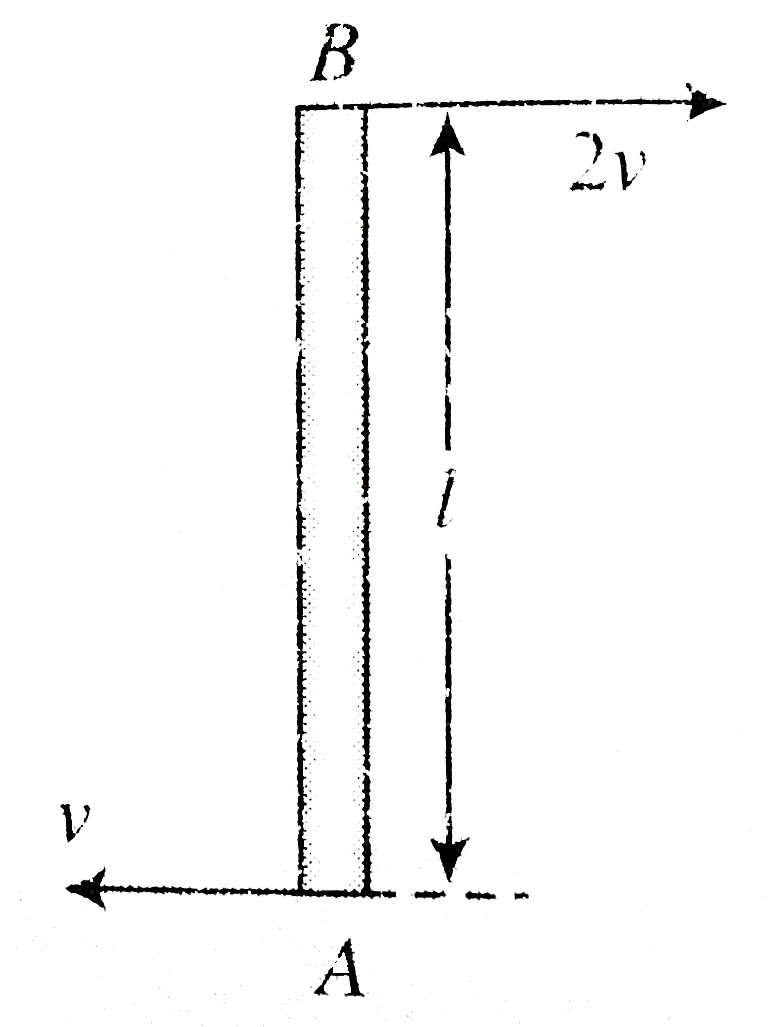
View Solution
Knowledge Check
A uniform rod of mass M and length L is moving on a smooth horizontal plane, such that its one end is moving with a velocity V0 and other end is moving with velocity 2V0 in the same direction as shown. Then which of the following is kinetic energy of the rod?
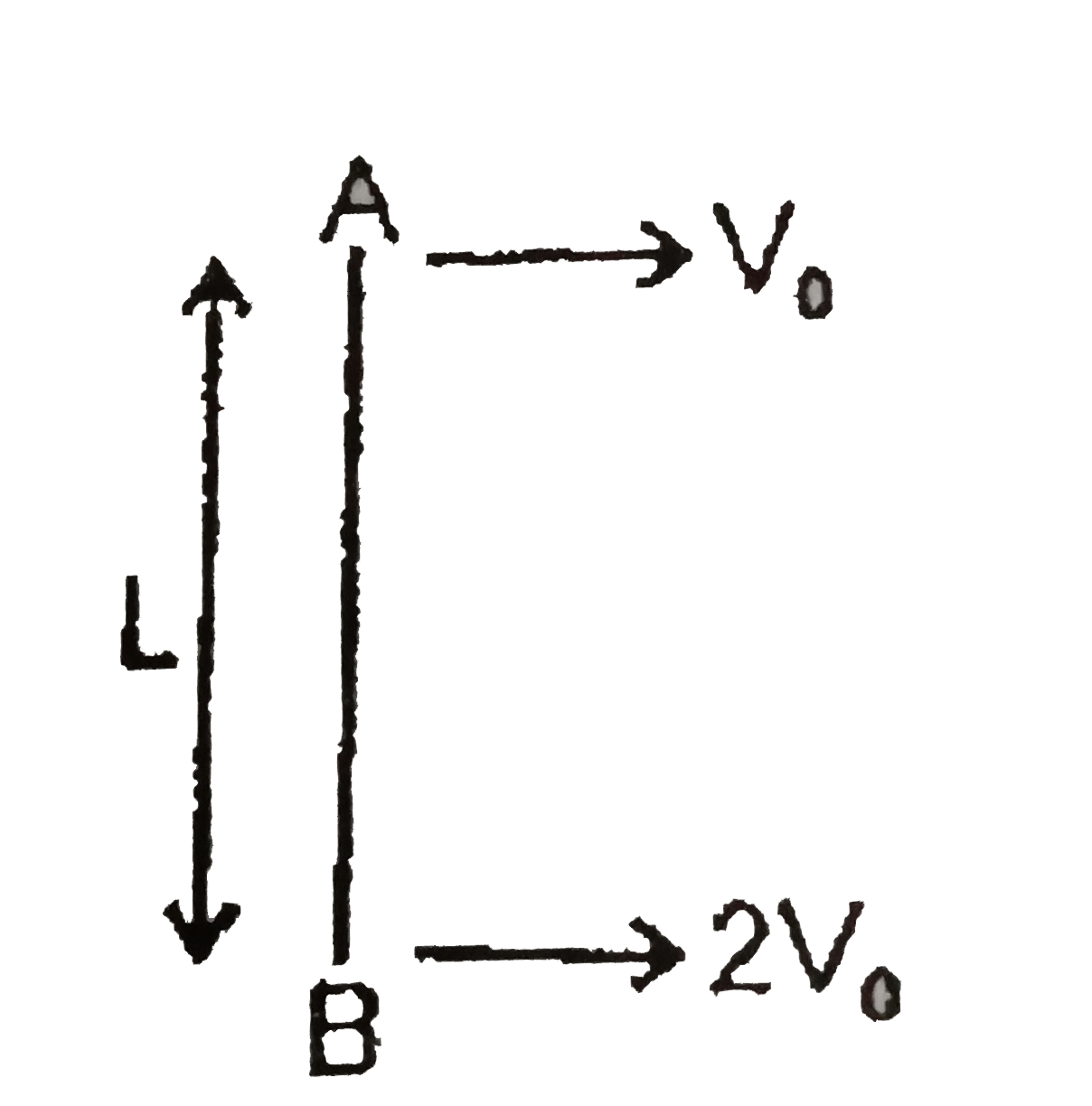 A132LMV20B2431MV20C76MV20D3124MV20
A132LMV20B2431MV20C76MV20D3124MV20A uniform rod of length L and mass M is lying on a frictionless horizontal plane and is pivoted at one of its ends as shown in Fig. There is no friction at the pivot. An inelastic ball of mass m is fixed with the rod at a distance L/3 from O. A horizontal impulse J is given to the rod at a distance 2L/3 from O in a direction perpendicular to the rod. Assume that the ball remains in contact with the rod after the collision and impulse J acts for a small time interval △t. Now answer the following questions:
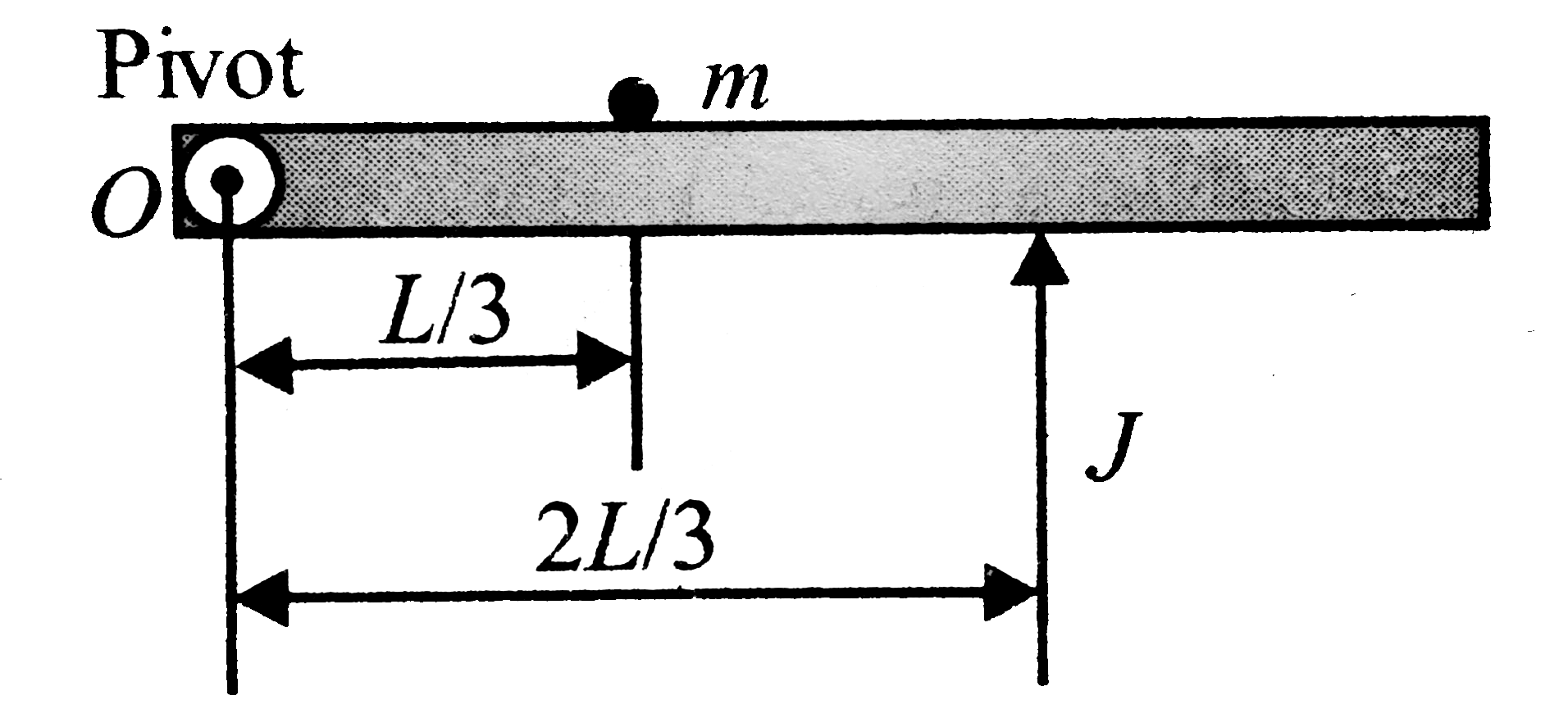
Find the magnitude of the impulse applied by the during the time interval △tAmJ(m+3M)BmJ(3m+M)CMJ(m+3M)DMJ(3m+M)An impulse I is applied at the end of a uniform rod if mass m. Then:
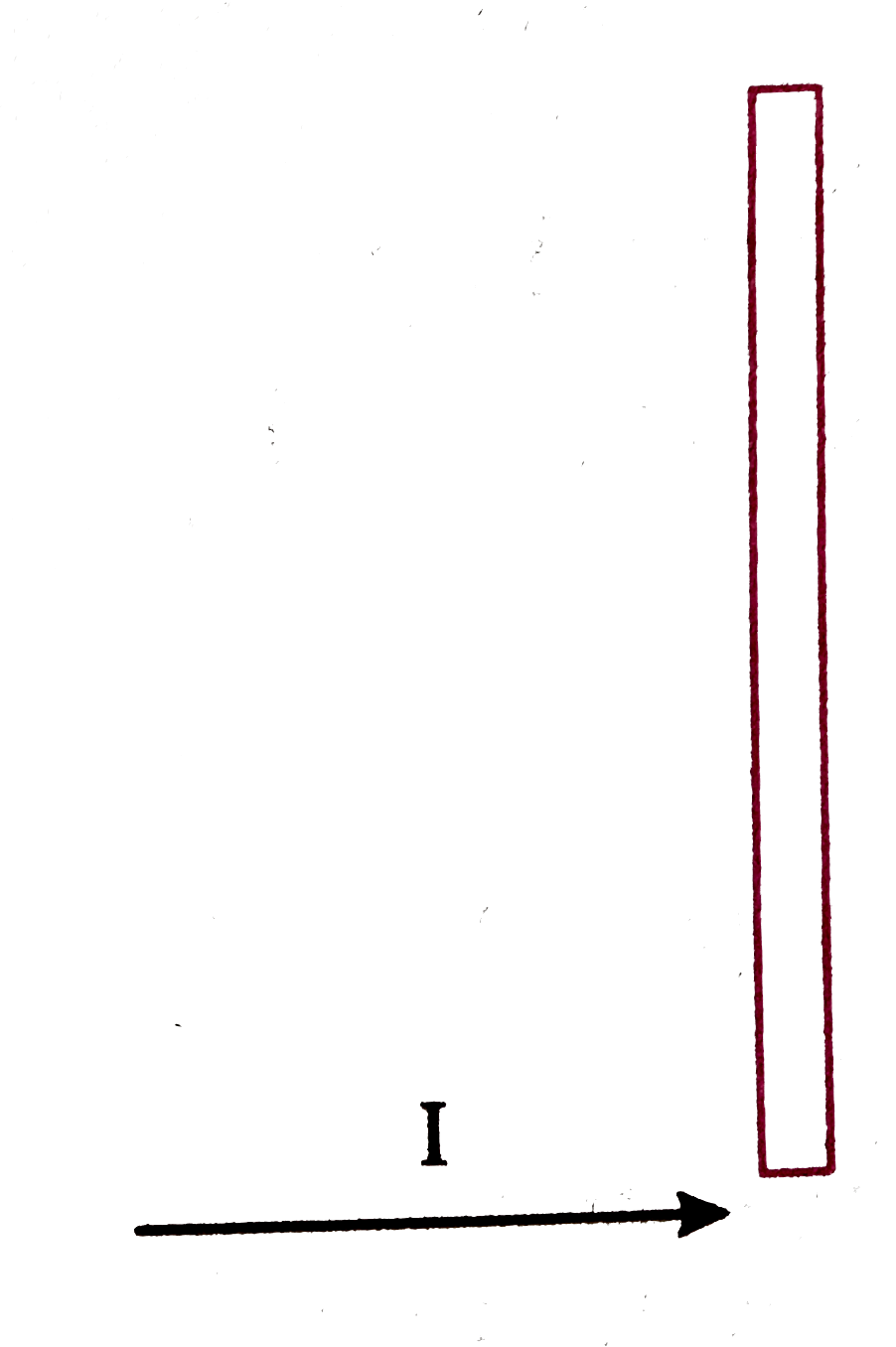 AKE of translation of the rod is I22mBKE of rotation of the rod is I26mCKE of rotation of the rod is 3I22mDKE of the rod is 2I2m
AKE of translation of the rod is I22mBKE of rotation of the rod is I26mCKE of rotation of the rod is 3I22mDKE of the rod is 2I2m
A uniform rod of mass M and length 2L lies on a smooth horizontal table. There is a smooth peg O fixed on the table. One end of the rod is kept touching the peg as shown in the figure. An impulse J is imparted to the rod at its other end. The impulse is horizontal and perpendicular to the length of the rod. Find the magnitude of impulse experienced by the peg.

View SolutionA uniform rod of length l is given an impulse at right angles to its length as shown. Find the distance of instantaneous centre of rotation from the centre of the rod.
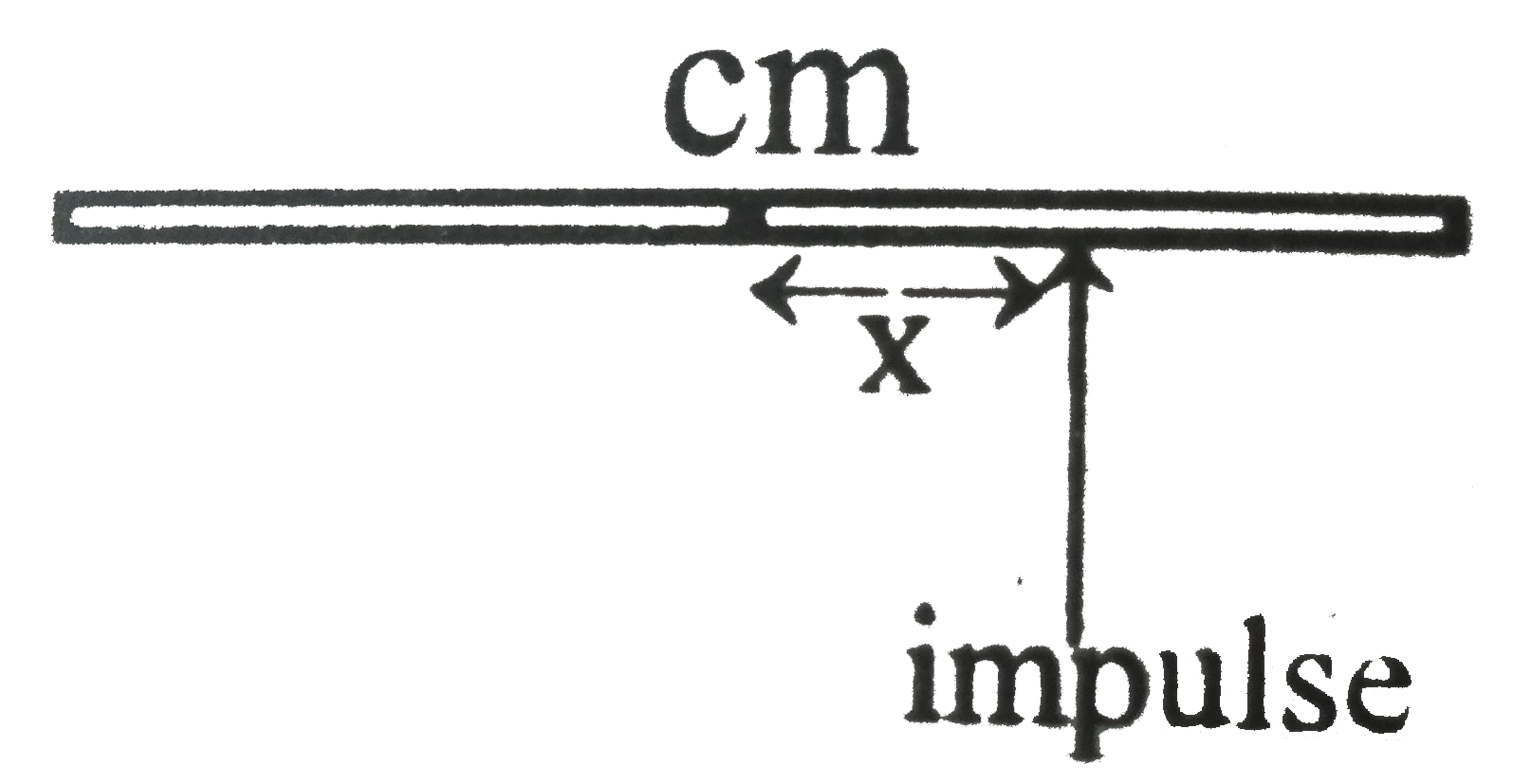 .
.
View SolutionA uniform rod AB of mass m and length l is at rest on a smooth horizontal surface. An impulse J is applied to the end B perpendicular to the rod in horizontal direction. Speed of the point A of the rod after giving impulse is:
View SolutionA uniform rod of mass M and length l is hinged at point O and is free to rotate on a horizontal smooth surface. Point O is at a distance of l4 from one end of the rod. A sharp impulse P0=2√130kgm/s is applied along the surface at one end of the rod as shown in figure [tanθ=97]
(a) Find the angular speed of the rod immediately after the hit
(b) Find the impulse on the rod due to the hinge.
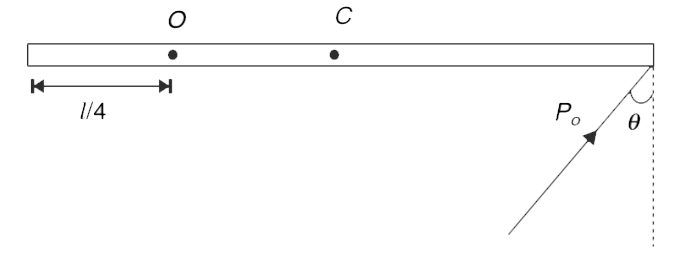
View SolutionA uniform rod of mass M is moving in a plane and has a kinetic energy of 43MV2 where V is speed of its centre of mass. Find the maximum and minimum possible speed of the end point of the rod.
View Solution